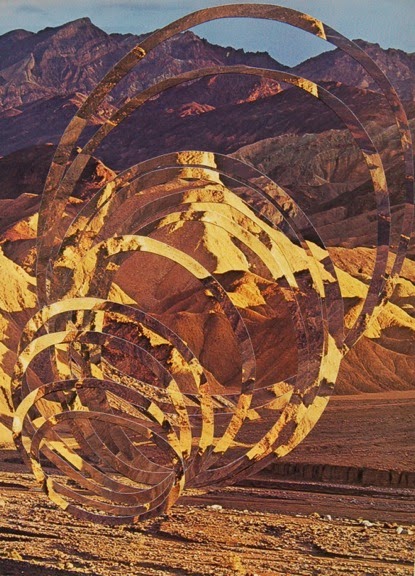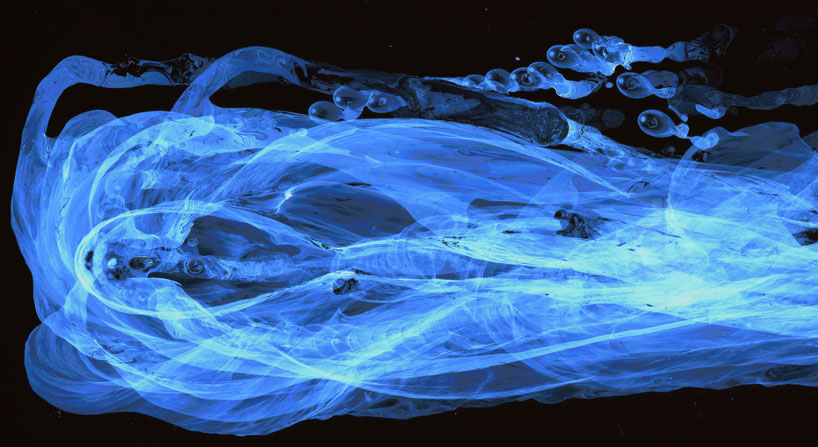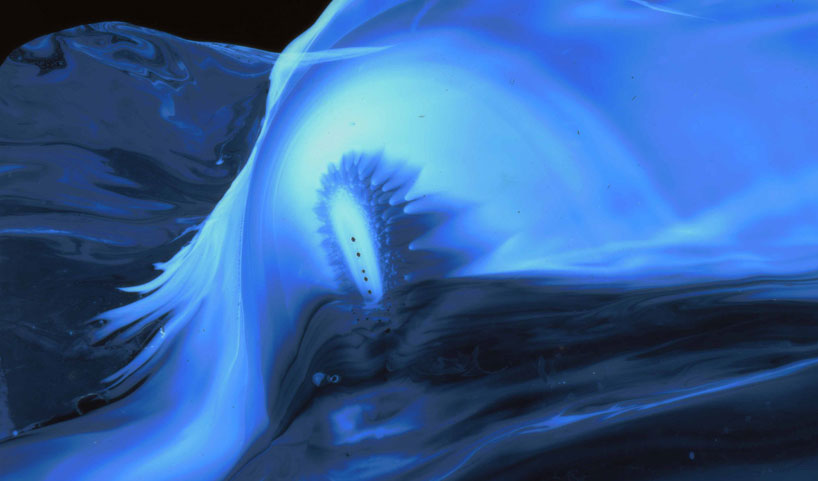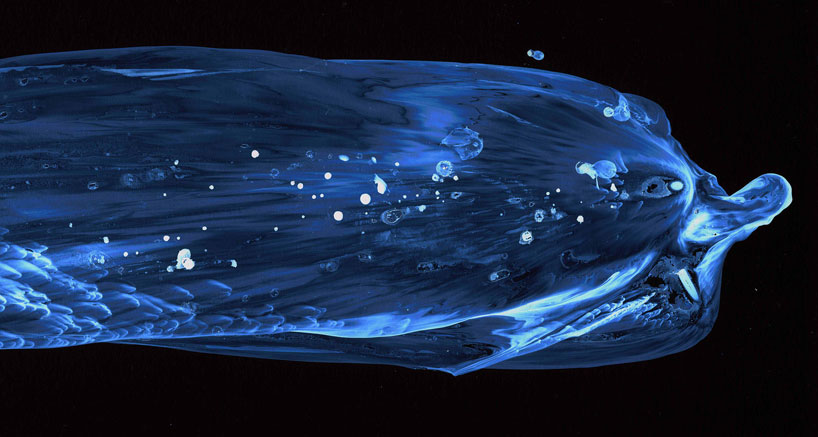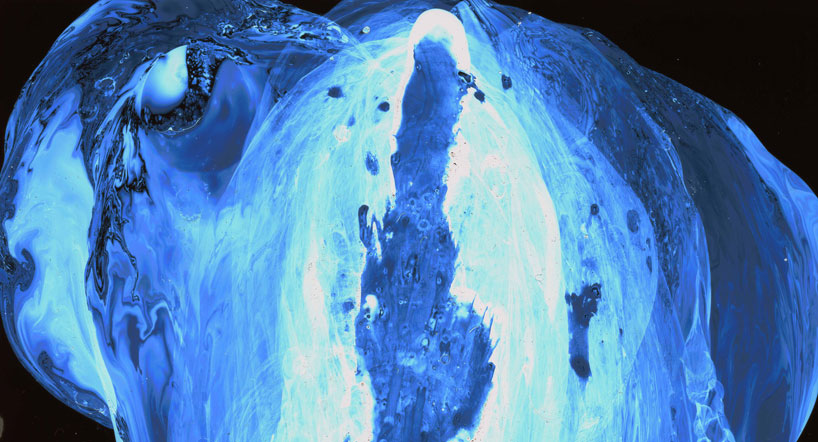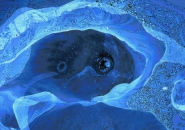http://www.aqnb.com/2012/09/19/the-materiality-of-paint-show-review/
Installation of Ian Davenport’s work in The Materiality of Paint at Fine Art Society Contemporary. Image courtesy of FAS London.
Materiality in
architecture is the concept of, or applied use of, various materials or substances in the medium of building.
Material is a relative term in architectural design and so may be used to designate materials which are considered to be
virtual, (such as
photographs,
images or text) or other materials which are
natural. Some materials may be considered as combinations of the two. Certain
veneers which are composed of
images printed on plastic are a good example of this. Observationally therefore,
virtual materials c
an be said not to exist without a natural physical substrate. Therefore, what separates a virtual material from a natural one is some aspect of the mind and perception as well as a process of representation to produce them.
http://en.wikipedia.org/wiki/Materiality_%28architecture%29
When referring to digital text, pictures and documents, the term
materiality refers to the physical medium used to store and convey the text, as apart from the text itself. This concept is important to
archivists and
historians,
who often require access to the physical medium of documents or
correspondence in order to understand the transitions that the document
underwent between initial conception and final
publication.
[1]
http://en.wikipedia.org/wiki/Materiality_%28digital_text%29
In terms of Digital Media Materiality can be defined in many ways,
'Considerations of materiality can be universally applied in the aesthetic
assessment of diverse contemporary art forms that range from traditional, low-tech
media to conceptual, ephemeral works.
Examples here include works by Richard Tuttle, Eva Hesse, Marina Abramovic, Tara Donovan, Agnes Martin, Cecily Brown, Tony Fitzpatrick and Bill Viola'.
Materiality as the Basis for the Aesthetic Experience In Contemporary Art By Christina Mills
http://www.umt.edu/art/sites/default/files/documents/graduate/Mills_Christina%20MA%20Art%20History.pdf
In
a parallel course, the artistic object strays out of museums, art
spaces and high-class collections in order to become a desktop image, a
saved file, data flowing on the Internet; every user can get it and
transform it.
Art becomes more accessible than ever,
especially if we consider the fact that many artworks are created in
the computer and are designated to stay there, without ever escaping
this immaterial digital world. Works that never reach materiality; they
are transferred through the Internet, meet the public and change shape
as they interact with it. In other words, every work of art -whether it
has material substance or not- has somehow become a common and everyday
thing.
Everyday life losing its materiality: Dematerialized objects, simulated experience and virtual identities
On the other hand, although we can
have access to these digital data any moment we wish, they always escape
our senses. A computer translates any kind of information into
numerical data, saves it and subsequently reconstructs it in an
understandable form that reproduces the familiar form of a photo, a
video or a printed text.
However, a digital photograph -or a
digital video- is very different from an analogical one: it’s not the
registration of light onto film, but a synthesis of elements called
“pixels”; the pixels correspond to numerical values according to their
color and their place in the picture.
In other words, what we have is not a copy or a registration of reality, but a reconstruction of what’s visible:
“A digital image does not represent
an optical trace such as a photograph but provides a logical model of
visual experience. Its structure is one of language: logical procedures
of algorithms through which data is orchestrated into visual form”[1].
- See more at: http://interartive.org/2009/06/hypertext-digital-art/#sthash.pNDKnSkN.dpuf
Beyond Materiality: A digital revolution in life, art and logos | CHRISTINA GRAMMATIKOPOULOU
Our lives behind a radiant screen:
photos, books, music… things that used to color up our personal space,
resonating moments of the past and reflecting personality and taste, are
now crammed onto the infinitesimal square millimeters of the hard disk.
They can be multiplied intact, change place with one click, get
converted through software or be forever erased without leaving a trace;
the noise of the dust on the grooves of the vinyl disk, the smell of a
new book, the yellowish paper of the old photographs, are experience
more and more distant in this world of minimal matter.
In a parallel course, the artistic
object strays out of museums, art spaces and high-class collections in
order to become a desktop image, a saved file, data flowing on the
Internet; every user can get it and transform it.
Art becomes more accessible than ever,
especially if we consider the fact that many artworks are created in
the computer and are designated to stay there, without ever escaping
this immaterial digital world. Works that never reach materiality; they
are transferred through the Internet, meet the public and change shape
as they interact with it. In other words, every work of art -whether it
has material substance or not- has somehow become a common and everyday
thing.
Everyday life losing its materiality: Dematerialized objects, simulated experience and virtual identities
On the other hand, although we can
have access to these digital data any moment we wish, they always escape
our senses. A computer translates any kind of information into
numerical data, saves it and subsequently reconstructs it in an
understandable form that reproduces the familiar form of a photo, a
video or a printed text.
However, a digital photograph -or a
digital video- is very different from an analogical one: it’s not the
registration of light onto film, but a synthesis of elements called
“pixels”; the pixels correspond to numerical values according to their
color and their place in the picture.
In other words, what we have is not a copy or a registration of reality, but a reconstruction of what’s visible:
“A digital image does not represent
an optical trace such as a photograph but provides a logical model of
visual experience. Its structure is one of language: logical procedures
of algorithms through which data is orchestrated into visual form”[1].
- See more at: http://interartive.org/2009/06/hypertext-digital-art/#sthash.pNDKnSkN.dpuf
In a parallel course, the artistic object strays out of museums, art spaces and high-class collections in order to become a desktop image, a saved file, data flowing on the Internet; every user can get it and transform it.
Art becomes more accessible than ever, especially if we consider the fact that many artworks are created in the computer and are designated to stay there, without ever escaping this immaterial digital world. Works that never reach materiality; they are transferred through the Internet, meet the public and change shape as they interact with it. In other words, every work of art -whether it has material substance or not- has somehow become a common and everyday thing.
Everyday life losing its materiality: Dematerialized objects, simulated experience and virtual identities
On the other hand, although we can have access to these digital data any moment we wish, they always escape our senses. A computer translates any kind of information into numerical data, saves it and subsequently reconstructs it in an understandable form that reproduces the familiar form of a photo, a video or a printed text.
However, a digital photograph -or a digital video- is very different from an analogical one: it’s not the registration of light onto film, but a synthesis of elements called “pixels”; the pixels correspond to numerical values according to their color and their place in the picture.
In other words, what we have is not a copy or a registration of reality, but a reconstruction of what’s visible:
“A digital image does not represent an optical trace such as a photograph but provides a logical model of visual experience. Its structure is one of language: logical procedures of algorithms through which data is orchestrated into visual form”[1].
Beyond Materiality: A digital revolution in life, art and logos | CHRISTINA GRAMMATIKOPOULOU
Our lives behind a radiant screen:
photos, books, music… things that used to color up our personal space,
resonating moments of the past and reflecting personality and taste, are
now crammed onto the infinitesimal square millimeters of the hard disk.
They can be multiplied intact, change place with one click, get
converted through software or be forever erased without leaving a trace;
the noise of the dust on the grooves of the vinyl disk, the smell of a
new book, the yellowish paper of the old photographs, are experience
more and more distant in this world of minimal matter.
In a parallel course, the artistic
object strays out of museums, art spaces and high-class collections in
order to become a desktop image, a saved file, data flowing on the
Internet; every user can get it and transform it.
Art becomes more accessible than ever,
especially if we consider the fact that many artworks are created in
the computer and are designated to stay there, without ever escaping
this immaterial digital world. Works that never reach materiality; they
are transferred through the Internet, meet the public and change shape
as they interact with it. In other words, every work of art -whether it
has material substance or not- has somehow become a common and everyday
thing.
Everyday life losing its materiality: Dematerialized objects, simulated experience and virtual identities
On the other hand, although we can
have access to these digital data any moment we wish, they always escape
our senses. A computer translates any kind of information into
numerical data, saves it and subsequently reconstructs it in an
understandable form that reproduces the familiar form of a photo, a
video or a printed text.
However, a digital photograph -or a
digital video- is very different from an analogical one: it’s not the
registration of light onto film, but a synthesis of elements called
“pixels”; the pixels correspond to numerical values according to their
color and their place in the picture.
In other words, what we have is not a copy or a registration of reality, but a reconstruction of what’s visible:
“A digital image does not represent
an optical trace such as a photograph but provides a logical model of
visual experience. Its structure is one of language: logical procedures
of algorithms through which data is orchestrated into visual form”[1].
- See more at: http://interartive.org/2009/06/hypertext-digital-art/#sthash.pNDKnSkN.dpuf
http://interartive.org/2009/06/hypertext-digital-art/




 ehance.
ehance.


































